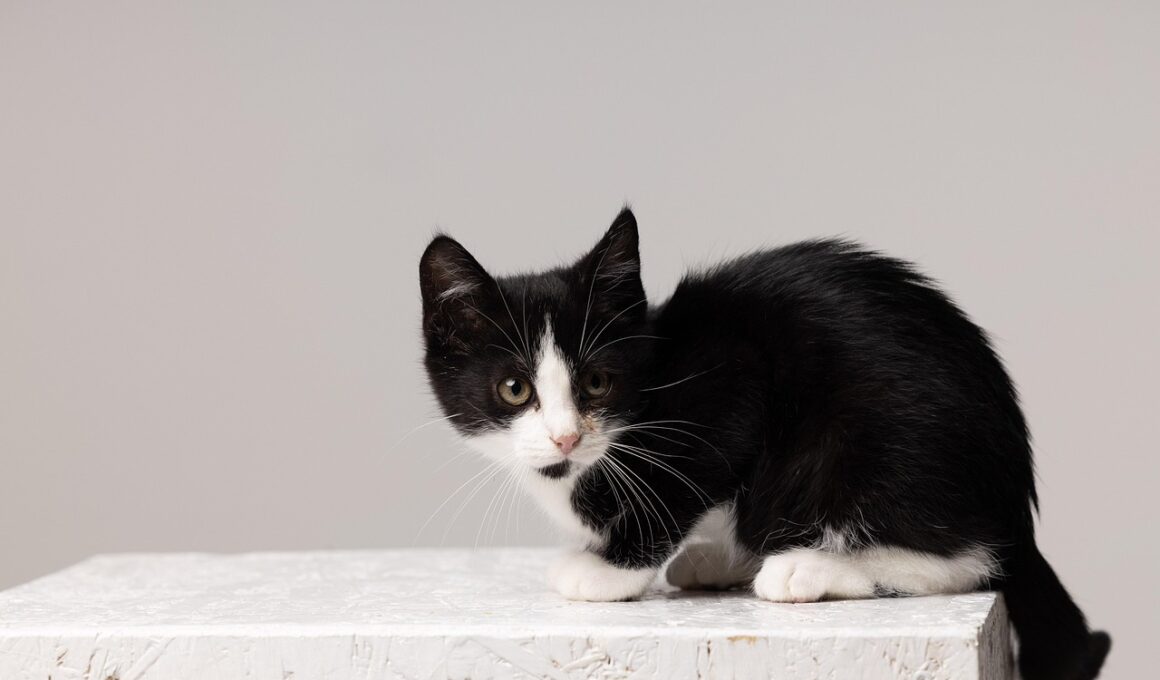Cat Rescue Volunteer Tales: Challenges and Rewards
Volunteering in cat rescue can be an emotionally profound journey. Many volunteers recount their experiences, highlighting profound challenges faced while assisting these vulnerable animals. One significant challenge is the overwhelming number of stray and abandoned cats needing rescue. Volunteers often find themselves in situations where they must choose between multiple cats needing immediate help. This decision-making process can be stressful and guilt-inducing, causing volunteers to experience emotional turmoil. The physical demands of the work also take their toll, ranging from lifting heavy crates to spending long hours in shelters. These tasks can lead to physical exhaustion, making it imperative for volunteers to maintain their wellbeing. However, amidst these challenges, there are immense rewards. Every saved cat represents a life transformed, reinforcing the motivation behind this noble cause. The joy of successfully rehabilitating a cat and finding it a loving forever home makes every challenge worthwhile. Many volunteers form strong bonds with the animals, making the journey deeply personal. Their stories often inspire others to join the cause, amplifying their efforts in saving more cats. Such experiences create a community of like-minded individuals dedicated to making a real difference.
Connecting with Fellow Cat Lovers
One of the most fulfilling aspects of volunteering in cat rescues is the opportunity to connect with fellow cat lovers. Volunteers often come together, forming close-knit communities focused on the same mission: the welfare of felines in need. These connections often extend beyond the shelter, resulting in friendships forged through shared experiences, triumphs, and challenges. Volunteers find solace in each other’s company, knowing they’re not alone in their emotional burdens. Team activities, such as fundraising events and awareness campaigns, further strengthen these bonds. These events also allow volunteers to educate the public about the significance of cat rescue efforts. Social media platforms serve as a crucial tool for volunteers to share their experiences and motivate others to join the cause. Often, personal stories of rescued cats draw attention and generate positive discussions that create awareness. This sense of community fosters a supportive environment, where volunteers cheer each other on and share advice on tackling difficulties they encounter while working. The friendships formed empower volunteers, ensuring they remain committed to their shared mission of saving as many cats as possible.
Overcoming Emotional Challenges
The emotional challenges of cat rescue volunteerism can be significant and challenging to navigate. Many volunteers face the heart-wrenching reality of dealing with sick or injured cats, leading to feelings of helplessness. Witnessing the dire conditions of these cats can often take an emotional toll, leaving volunteers feeling overwhelmed. Many times, volunteers are confronted with triage situations where they must act quickly to address immediate medical needs. Thus, maintaining personal wellbeing during these taxing moments becomes crucial. Volunteers often employ various coping strategies, including peer support systems and self-care practices. Engaging in open discussions about emotions allows volunteers to share the weight of their responsibilities. Talking about these heart-wrenching experiences can be therapeutic, providing a release for pent-up feelings of frustration or sadness. In addition, volunteers often participate in training sessions to better equip themselves to handle the emotional aspects of the job. By learning practical techniques and emotions management, volunteers effectively confront the challenges of animal rescue while preserving their mental health. This balance enables them to provide the best care for their feline charges.
Success Stories That Inspire
Among the challenges, cat rescue volunteers witness countless success stories that reignite their passion. These moments often come unexpectedly, reminding volunteers why they joined this rewarding work. Success stories often highlight the remarkable transformations of rescued cats, from frightened strays to lovable companions. Volunteers frequently share impactful anecdotes, showcasing the development of specific cats they’ve worked with over time. For instance, a shy, emaciated cat that initially resisted human interaction transforms into a loving pet, often within weeks of receiving care and attention. These heartwarming narratives not only uplift fellow volunteers but also serve to inspire newcomers. Seeing the incredible resiliency of these animals reinforces their commitment to the mission. Additionally, volunteers often document success stories on social media, engaging broader audiences and raising awareness for their cause. Personal stories draw attention, showcasing real-life examples of the impact of their efforts. These heartfelt representations motivate others to become involved, amplifying the rescue’s mission. The successes fuel passion and remind volunteers that every effort helps to create positive outcomes in the lives of these cats, ensuring they thrive in loving homes.
The Importance of Community Outreach
Community outreach plays a vital role in cat rescue efforts, and volunteers often engage in various initiatives to raise awareness. Through educational programs and events, volunteers aim to highlight the significance of responsible pet ownership, advocating for spaying/neutering to control the stray population. By sharing stories and statistical data, they emphasize the urgent need for community support in the fight against animal cruelty and neglect. Volunteers also strive to foster partnerships with local businesses and organizations, enhancing their ability to reach wider audiences. Often, organizing adoption drives in pet-friendly locations enables them to connect with potential adopters directly. Often, these events lead to wonderful success tales, facilitating the rehoming of many cats. Additionally, workshops on cat care educate interested individuals about humane practices, fostering compassion and understanding for feline welfare. Volunteers often dedicate time and resources to develop engaging educational materials to distribute within the community. Networking with schools and community organizations creates pathways for youth involvement, ensuring future generations continue advocating for animals. Such outreach initiatives help build a culture of care, promoting a collective effort in sustaining cat rescue endeavors.
Personal Growth Through Volunteering
Another invaluable aspect of volunteering in cat rescues is the substantial personal growth that volunteers experience. Engaging in this line of work often helps individuals develop crucial skills that translate into various areas of life. From teamwork and leadership to interpersonal communication processes, volunteers learn to work harmoniously while managing the rescue’s operations effectively. Many develop organizational skills while managing supplies, coordinating events, or even taking on administrative roles within the rescue. Conflict resolution is another vital skill sharpened during volunteer experiences, given the emotional nature of the work. Volunteers frequently encounter disagreements or tension among themselves or with clients, thus learning how to mediate effectively. Additionally, volunteering fosters heightened empathy and compassion, both critical skills that contribute to stronger interpersonal relationships. The direct impact on the welfare of animals nurtures a sense of purpose that enriches their personal life. Many volunteers report an increased level of fulfillment and happiness as they see the tangible outcomes of their contributions. This personal growth allows them to become more adept at handling challenges and connecting authentically with others.
Future of Cat Rescue Volunteering
The future of cat rescue volunteering appears filled with promise, as dedicated individuals continue to step forward in support of the cause. Emerging trends in animal welfare, such as community cat programs, allow volunteers to play even more active roles in caring for feral populations. Incremental shifts toward adopting non-lethal strategies help stabilize cat populations, reducing societal concerns while protecting their welfare. Volunteers increasingly participate in grassroots movements, utilizing innovative avenues for engagement. They leverage technology and social media platforms to spread awareness efficiently, reaching audiences they may not have reached in the past. Many are using crowdfunding to support rescue operations, facilitating vital resources necessary for care. The increasing focus on animal advocacy and welfare education also suggests that future volunteers will be well-informed and passionate about the mission. Initiatives that promote foster-to-adopt programs are also gaining traction, ensuring seamless transitions from shelter to forever homes. These efforts ultimately create stronger networks dedicated to the sustainability of feline welfare. As the community expands, the collaborative efforts between volunteers, welfare organizations, and the public stand poised to make a lasting impact on cat rescue, improving the lives of countless cats.
Inspiring Future Generations
As cat rescue endeavors evolve, a strong focus on inspiring future generations of volunteers comes to the forefront. Engaging young people through educational platforms and outreach workshops fosters a commitment to animal welfare from an early age. Teaching children about compassion and responsibility towards animals can cultivate longstanding interests in volunteerism. Schools often partner with rescues to host workshops or assemblies, weaving animal care education into their curriculums. By emphasizing humane values and the importance of spaying/neutering, young minds can motivate future initiatives aimed at controlling cat populations. Furthermore, creating programs that allow students to volunteer in shelters may help them gain practical experience, instilling empathy and a love for animals. Teenagers can take part in Junior Volunteer programs, gaining valuable skills while participating in meaningful activities directly linked to animal care. As they learn to advocate for pets in need, these future volunteers become ambassadors for the cause. The resulting community engagement nurtures a compassionate culture, ensuring enduring support for cat rescue efforts well into the future. By igniting a passion for animal welfare at a young age, they help establish a legacy of compassion and commitment to caring for all felines.


